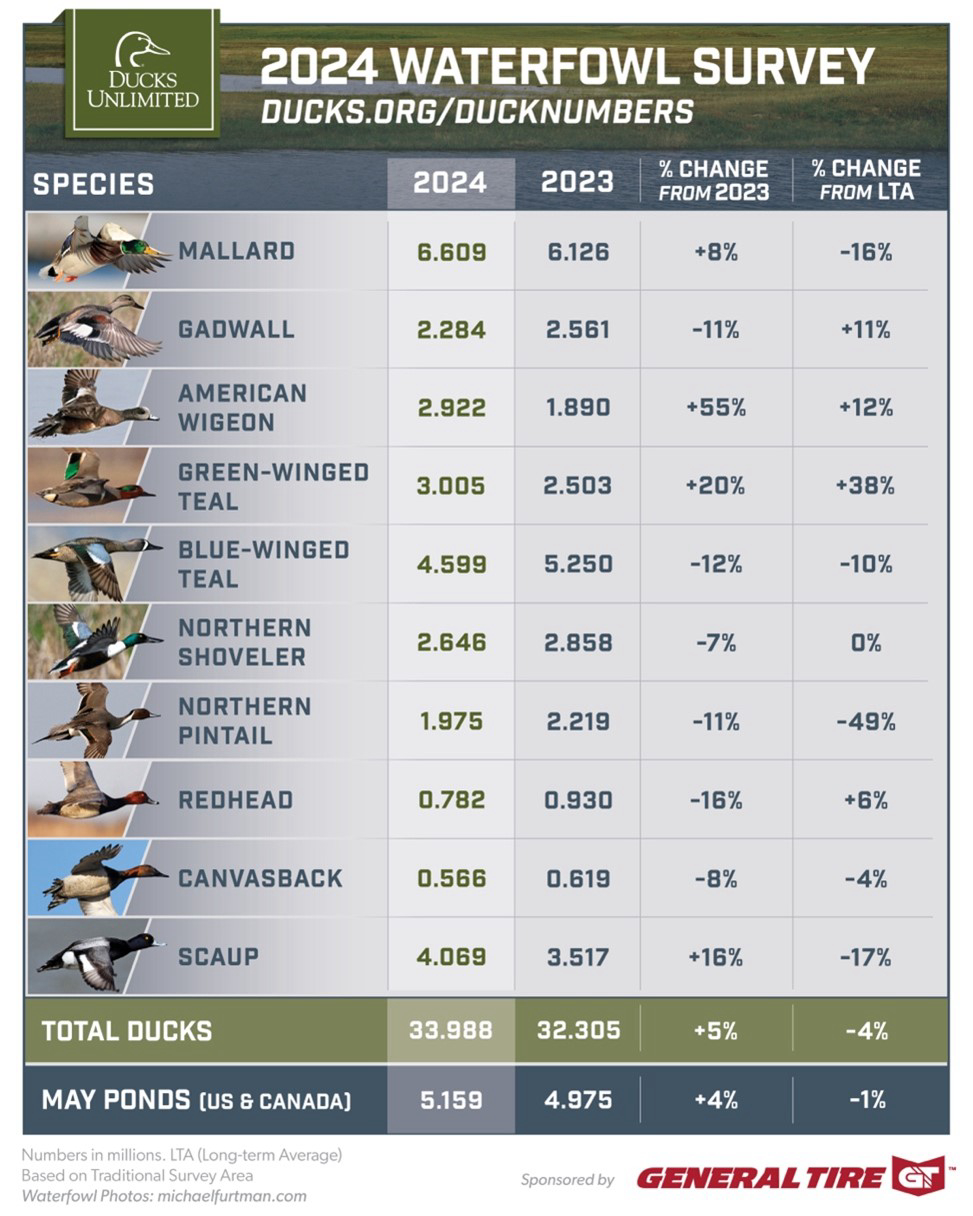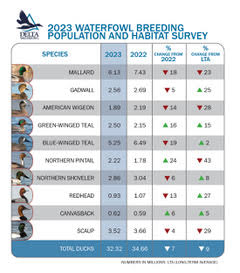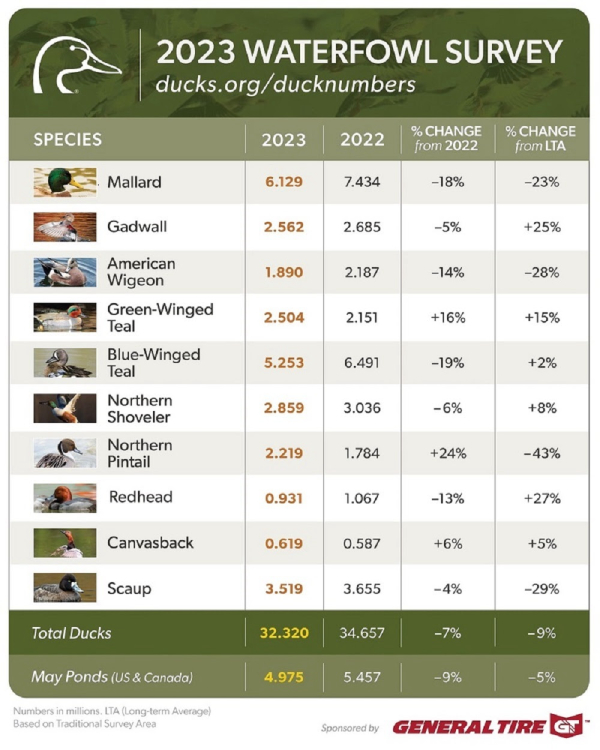Duck Breeding Populations Increase Again in 2014
JACKSON- The U.S. Fish and Wildlife Service and Canadian Wildlife Service recently completed their annual waterfowl population surveys on the breeding grounds in the northern United States and Canadian provinces. These surveys monitor waterfowl populations and critical wetland habitats, which are used to help set hunting season frameworks. Overall, North American breeding duck populations increased 8 percent from 2013 estimates to just over 49 million birds.
Population estimates for eight of the ten surveyed duck species increased this year. Mallard numbers increased 5 percent from last year to 10.9 million birds. American wigeon, gadwall, and green-winged teal populations showed the greatest increases (18 percent, 14 percent, and 13 percent, respectively). Scaup, redhead, and northern shoveler populations increased as well. Northern pintails (-3 percent) and canvasbacks (-13 percent) were the only species that demonstrated a decrease in numbers.
The 2014 May pond count increased 4 percent to 7.1 million ponds. “Although wetland conditions in the breeding grounds were good again this year, we are still experiencing a decline in grassland nesting habitat in both the United States and Canada, which is extremely important for nesting waterfowl,” said James Callicutt, MDWFP Waterfowl Program Biologist. Houston Havens, MDWFP Waterfowl Program Leader, commented, “Even with breeding duck populations at record numbers, hunters in Mississippi need to remember that many factors contribute to whether or not these birds show up here in mass.” Fall and winter weather, as well as wetland habitat conditions on the wintering grounds will play a major role in duck migrations, which will ultimately determine the success of Mississippi’s duck hunters.
For more information regarding waterfowl in Mississippi, visit our website at www.mdwfp.com/waterfowl or call us at (601) 432-2199. Follow us on Facebook at www.facebook.com/mdwfp or on Twitter at www.twitter.com/MDWFPonline.






